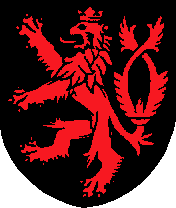 History of Czech Crystal
History of Czech Crystal


Forest Glass Sources of Central European glass can be found in Corinthian excavations from the 11th and 12th centuries. These primitive glass styles spread through Italy to the East - to Istria - and to the North - to Germany, Czechia and Holland. At the time the production of arts and crafts ceased to be the sole preserve of monasteries. Glassworks started being built in forests, as workers searched for more wood to feed their furnaces. And the darkest forests were colonized in this hungry quest. These glassworks produced "forest glass" - glass of a green shade caused by the imperfect refining of the raw material - potash and quartz sand. Potash was gleaned from the ashes of burned wood and used as a melting material instead of soda. Potash glass is typical for this Central European area. The first sign of Czech glass in the history of glass were the unique vessel from the 15th century - now generally known as "Czech type" glass. In the 16th century, glasses inspired by Venetian Renaissance glass - hempen and rammer - were produced for the German and Italian markets. Engraved and cut crystal - Glass from famous Czech cutters and engravers In 1588 the emperor Rudolf the 2nd invited to Prague Mr. Ottavio Miseroni who founded the first cutting workshop for diamonds. It was the main pre-condition for the big development of the newly arisen way of decorating the glass- "engraving" - the cutting of glass on the engraving appliances by little stone or copper wheels. The most important craftsman in Prague of these times was Caspar Lehmann who became an imperial court engraver. Thus Rudolf the 2nd made himself the generous patron and Prague the main center of this new glass art craft. From Prague it expand to the Central, later to whole Europe. During last third of 17th century the engraving of glass developed very quickly and two big centers were arisen: Jablonec area and Česká Lípa area. Tradition and skill of glass engravers has survived in these areas till actual days. The end of 17th and the beginning of 18th century brought the big success and the world glory of Czech glass. There was a strong development of specialized Czech production, the refining of glass by painting, engraving and cutting. In popularity Czech glass of these times put into the shade the favorite Venetian glass. The engraved and cut cups did not have only a practical function but made a representation too. By the end of 18th and at the beginning of 19th centuries the English, Irish and French lead crystal started to compete to Czech glass. Lead crystal was glass with the high contain of lead, very suitable for cutting having been softer, heavier and with the high luster. After the decline of business and the commercial isolation caused the Napoleon Wars, Czech glassworkers started the successful come back to the lost markets. They improved actually melting glass and learned how to make lead crystal. They created their own style combining the simple English diamond cut with the engraved decoration, later they introduced more difficult and complicated cut decorations. After the further crisis in the middle of 19th century Czech glass re-developed at the end and in the beginning of 20th century. Historical tradition of the Czech glass production In order to enable the customer to make a picture of the glass production there is presented the brief description of the history and tradition of the Czech glass industry which products are well known all over the world. About Bohemia's Crystal Art Framed by Germany, Austria, Slovakia and Poland is a precious little star called the Czech Republic, historically known as Bohemia - the former kingdom of central Europe. Shaped culturally by its famous king and emperor of the Holy Roman Empire, Charles IV, the Czechs sustained, despite the 50-year long communist influence, their centuries-long fame in the production of world-class art made of hand cut lead crystal. Crystal chandelier parts such as prisms/trimmings, bowls, arms and clad crafted in the Czech Republic are eagerly sought by interior designers and well known chandelier manufacturers all over the world. Nevertheless, for a chandelier to carry the label "Bohemia Crystal", the entire chandelier must be made in the Czech Republic. Also, it must pass or exceed very strict export quality standards set by the Czechs to enforce and protect the well-guarded trademark “Bohemia Crystal”. Crystal, by definition, is glass of superior quality and high degree of brilliance. Not all crystal is the same because its quality, color and brilliance strongly depend on the composition and proportioning of raw materials, and associated technological process, all of which are traditionally kept a secret to protect the formulae. To give the crystal a dramatic or exotic appearance, a specific blend of colors is added to the basic crystal glass formulae to create transparent pink, ruby red, light blue, cobalt blue, amber/topaz and green undertones. The richer is the design, the more facets to reflect light, the more precise the cut, the more valuable the crystal creation. Some Bohemia Crystal glass creations are further beautified with gold-plated and enameled designs to give them the ultimate statement of timeless beauty and elegance. |
